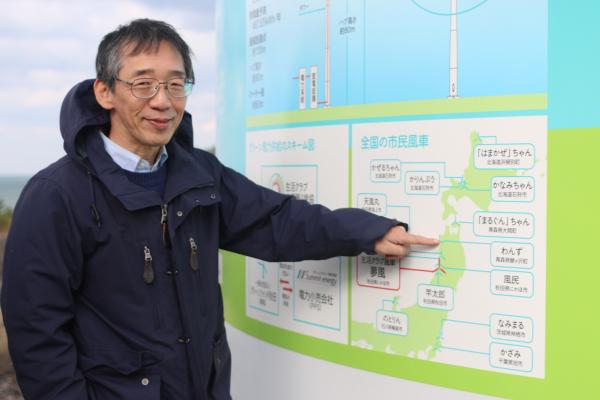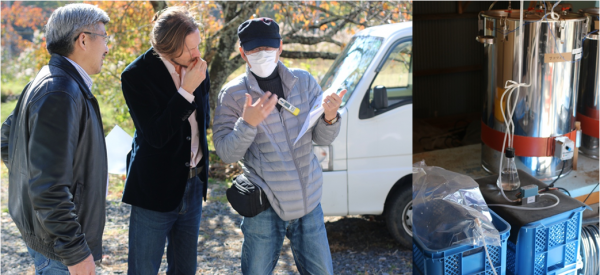Innovating in the Wake of Disaster: Some Notes from Fukushima’s Nuclear Exclusion Zone
Posted by Jelte Harnmeijer on Friday 10 February 2017
Social Innovation: Filling a void?
Work on a big new EU project being led by the James Hutton Institute called ‘SIMRA’ got me thinking about where social innovation comes from. To me, a ‘social innovation’ involves a change to the roles of social actors, along with the rules that govern how risks and benefits are distributed. But where does it come from, and what directs it?
I realised that in my field, which is community energy, innovation is often driven into a sort of ‘negative’ space that can be characterised by an absence, such as access to energy (in poor parts of the world) or control over particular types of energy (in rich parts). More specifically, I became interested in the fact that a lot of such social innovation appears to come about in the very act of circumventing existing policy that works to, as it were, reinforce the walls around these voids. In the highlands of Laos, for example, local ‘off-grid’ communities have come up with highly innovative ways of generating hydro-electricity using cheap, used, Chinese car parts, unhindered by anything that looks like ‘energy policy’. In the highly regulated energy space in the UK, on the contrary, local communities pour huge amounts of time and resources into the act of finding and implementing innovations around a policy regime that they experience as inhibitive and in a perennial state of playing catch-up (you can read about some examples here: www.climatexchange.org.uk/reducing-emissions/understanding-economic-impact-local-energy.
In the midst of thinking about this, I received an invitation to give a talk in Fukushima City, some 60 miles away from the epicentre of Japan’s recent (March 2011) nuclear catastrophe – an event that, outside of creating a gaping hole in Japan’s energy mix, created absences in the most painful of places: jobs, homes, and often loved ones. I knew that the nuclear disaster had uncorked a profound drive amongst many Japanese communities to take control of local energy systems, and I was keen to use the opportunity to study this social-innovation-in-the-shadow-of-catastophe first-hand. Off I went, with an entourage of radiation monitors strapped to my vest.
A team led by Prof. Koji Itonaga (right, wearing face mask) is looking for ways to revitalise the collapsed agricultural sector around Fukushima by switching to biofuel crops grown in contaminated soil.
Navigating deserted schools, businesses and retirement homes nestled within a radioactive landscape is a surreal experience. Within it, I discovered hotspots of social innovation in action. In an attempt to revitalise collapsed agrarian economies, a team led by Koji Itonaga (pictured above) is looking into ways to grow biofuel crops in radioactive soil. Others, like Yasushi Maruyama (pictured below), in and well beyond Fukushima are driving forward a variety of civic energy schemes, often catalysed by a sense of anger and frustration at what is widely perceived as an incumbent energy system that palpably lacks appropriate accountability.
A Silver Lining?
My visit profoundly changed the way I think about disasters. The 2011 Tōhuku tsunami off Fukushima, the 2015 Gorkha earthquake in Nepal, and hurricane Matthew in Haiti in September / October in 2016 all took out vulnerable centralised energy systems. But in the dark wake of such terrible disasters, we are increasingly seeing social innovations in the form of decentralised (and low-carbon) energy systems which, in principle and often in practise, offer greater resilience in the face of calamity. My hypothesis, and one I wish to put to the test, is that disasters create both the space and the energy (in the psychological sense) for disruptive innovation in the direction of greater resiliency. If this turns out to be true, could this be a silver lining to the encroaching storm fronts of the Anthropocene?

Community wind: an insurgent breed of energy in Japan. This is my host Dr. Yasushi Maruyama, who has written a lot about Japanese community renewables, and also helps develop projects.







Comments
Post new comment